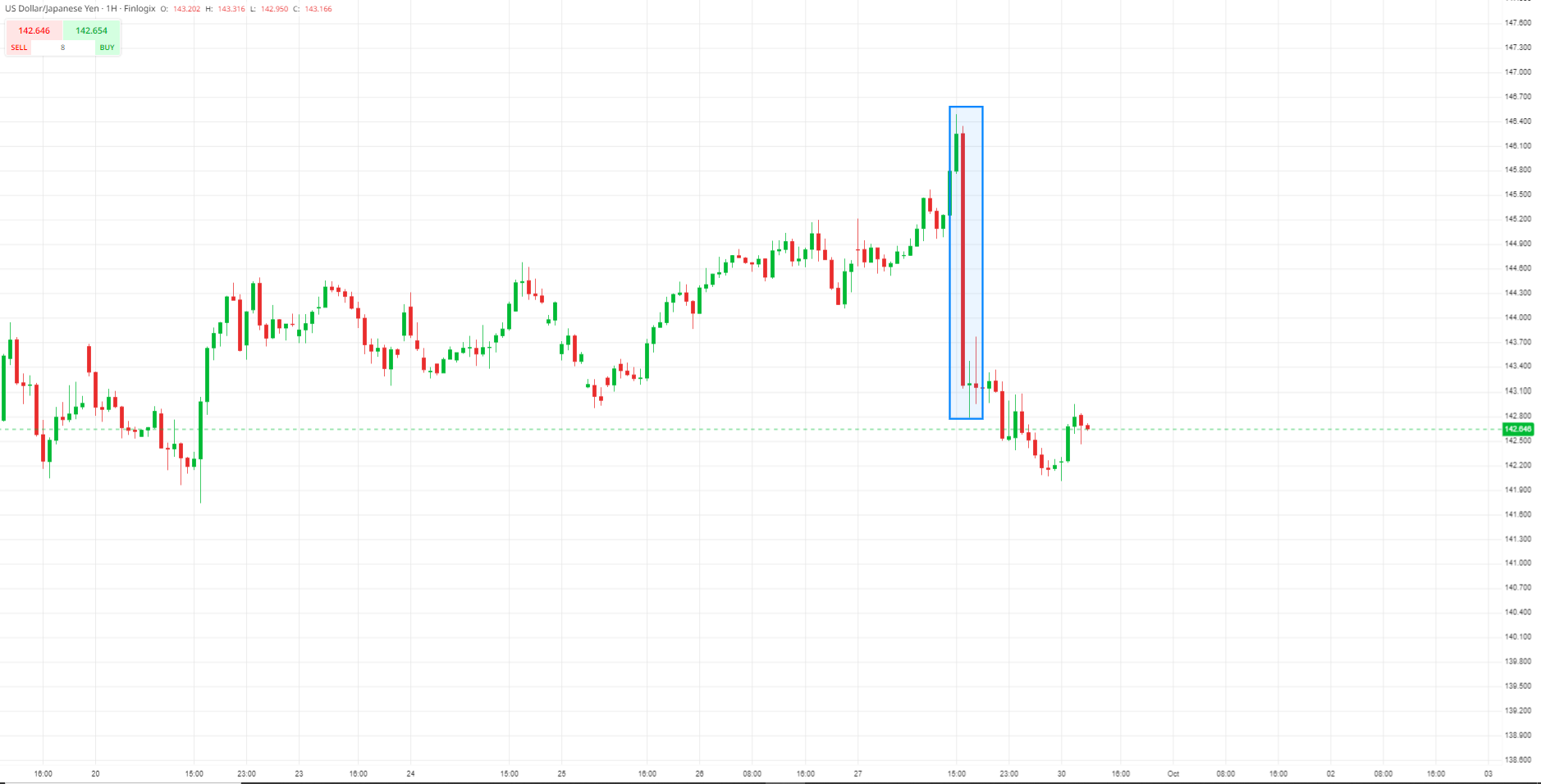
Analysing the Implications of the Leadership Election for the JPY
 ACY Securities - Luca Santos
ACY Securities - Luca Santos
Last Friday (27/09/2024) we had the Liberal Democratic Party (LDP) leadership election in Japan and it had a significant impact on the Japanese yen (JPY) and broader market sentiment. Shigeru Ishiba's unexpected victory against the more hawkish Sanae Takaichi led to considerable shifts in the USD/JPY exchange rate, which reflects the market’s reassessment of Japan's potential economic and foreign policy directions. The dynamics surrounding this leadership election and the implications for JPY's trajectory are crucial for investors and analysts to understand.
USDJPY H1

1. Political Context and Market Reactions
The LDP leadership election typically serves as a precursor to the country’s overall policy direction, influencing market confidence and currency valuation. Ishiba’s victory was particularly impactful because of his broader appeal within the LDP, and the unexpected support received by Sanae Takaichi in the initial round. As markets reacted to these developments, the USD/JPY rate saw a substantial drop.
- Market Sentiment: Initially, Takaichi’s strong performance in the first round was seen as a sign of potential continuity in BoJ policies, which favoured monetary tightening. However, Ishiba’s ultimate success signaled a less hawkish approach, resulting in the USD/JPY shifting from a “buy-on-dips” to a “sell-on-rallies” market.
2. Economic Policy Implications
Ishiba’s policy platform presents a mixed bag of economic strategies that have created some uncertainty around the future of Japan’s monetary and fiscal policy. His key economic stances include:
- Deflation Management: Deflation has been a persistent issue in Japan’s economy, and Ishiba’s commitment to addressing it is a focal point of his economic policy. However, his support for a gradual increase in BoJ interest rates appears contradictory, as higher rates could suppress demand and exacerbate deflationary pressures.
- Wage Growth and Household Income: One of Ishiba’s core objectives is to achieve wage growth that surpasses inflation, boosting household purchasing power. This is likely to be pursued through a comprehensive economic package aimed at supporting businesses and stimulating domestic demand.
- Fiscal Stimulus: Markets are anticipating a significant fiscal package from the new administration to address rising living costs. This could temporarily offset the need for immediate monetary tightening, shifting the timing of potential BoJ rate hikes to 2025.
Overall, these policy priorities suggest a period of accommodative fiscal measures, which could provide short-term support for the yen. However, the longer-term impact will depend on how successfully Ishiba manages to balance inflation, wage growth, and interest rate policy.
3. Foreign Policy and Strategic Outlook
Ishiba’s foreign policy stance has drawn attention, as it indicates a potential reorientation of Japan’s strategic alliances and defence policies. These developments are likely to have an indirect yet significant impact on JPY, as they shape market expectations around Japan’s geopolitical stability and trade relations.
- US-Japan Relations: One of the most notable aspects of Ishiba’s foreign policy is his desire to renegotiate the US-Japan defence agreement. This could create friction in bilateral relations, adding volatility to the yen in the short term.
- Asian Alliances and Security Posture: Ishiba has advocated for a more independent security stance, including the formation of an "Asian NATO" and a recalibration of Japan’s approach to China. These shifts could redefine Japan’s role in regional security, impacting investor sentiment toward JPY based on perceived geopolitical risks.
4. Market Outlook and Strategic Considerations
The immediate market impact has been a re-evaluation of JPY’s strength. Ishiba’s administration is seen as more dovish compared to his predecessor, which has reduced the expectation for rapid BoJ tightening. This change in market perception is reflected in:
- Currency Forecasts: Analysts are now anticipating a stronger yen in the medium term, with the potential for the USD/JPY to drop below 140.00 in Q4 2024.
- Shift in Market Strategy: The shift from “buy-on-dips” to “sell-on-rallies” suggests that traders are now more inclined to take profit on USD strength, expecting a gradual appreciation of the yen as fiscal measures take effect.
5. Key Takeaways and Risks
The LDP leadership election has introduced new variables into the outlook for the yen, creating a complex mix of domestic economic policies and geopolitical considerations:
- Delayed BoJ Rate Hikes: With a focus on fiscal support and wage growth, the timing for BoJ rate hikes is likely to be pushed back to 2025.
- Potential Yen Strengthening: If Ishiba successfully implements his economic policies without creating deflationary risks, the yen could continue to strengthen, especially if fiscal measures exceed market expectations.
- Geopolitical Uncertainty: Any significant changes in US-Japan or China-Japan relations could add further volatility to JPY, making foreign policy developments a crucial area to monitor.
Overall, while Ishiba’s leadership brings some policy clarity, it also introduces new risks and uncertainties for the yen, making it essential for market participants to stay vigilant in tracking both domestic economic strategies and external geopolitical shifts.
This content may have been written by a third party. ACY makes no representation or warranty and assumes no liability as to the accuracy or completeness of the information provided, nor any loss arising from any investment based on a recommendation, forecast or other information supplies by any third-party. This content is information only, and does not constitute financial, investment or other advice on which you can rely.
Try These Next
Why Is Forex Trading So Difficult?
How To Master MT4 & MT5 - Tips And Tricks For Traders
The Importance Of Fundamental Analysis In Forex Trading
Forex Leverage Explained: Mastering Forex Leverage In Trading & Controlling Margin
The Importance Of Liquidity In Forex: A Beginner's Guide
Close All Metatrader Script: Maximise Your Trading Efficiency And Reduce Stress
Best Currency Pairs To Trade In 2024
Forex Trading Hours: Finding The Best Times To Trade FX
MetaTrader Expert Advisor - The Benefits Of Algorithmic Trading And Forex EAs
LiquidityFinder
LiquidityFinder was created to take the friction out of the process of sourcing Business to Business (B2B) liquidity; to become the central reference point for liquidity in OTC electronic markets, and the means to access them. Our mission is to provide streamlined modern solutions and share valuable insight and knowledge that benefit our users.
If you would like to contribute to our website or wish to contact us, please click here or you can email us directly at press@liquidityfinder.com.
